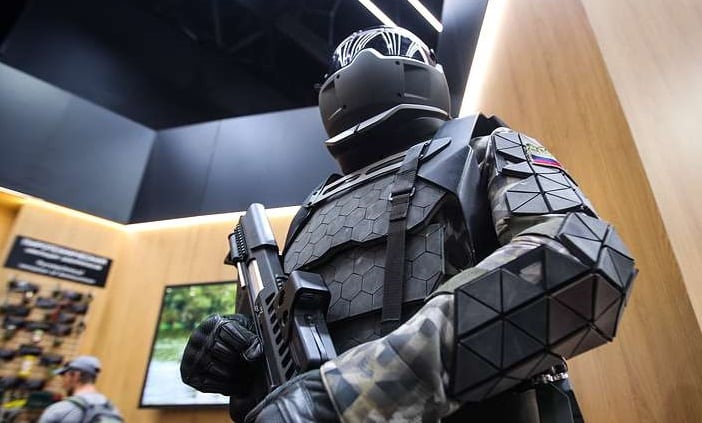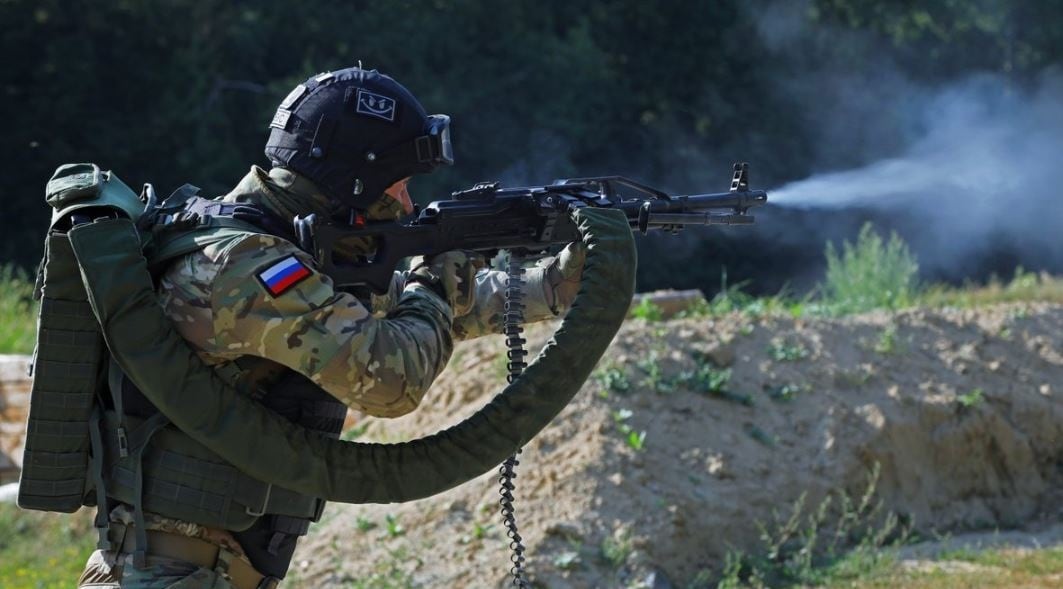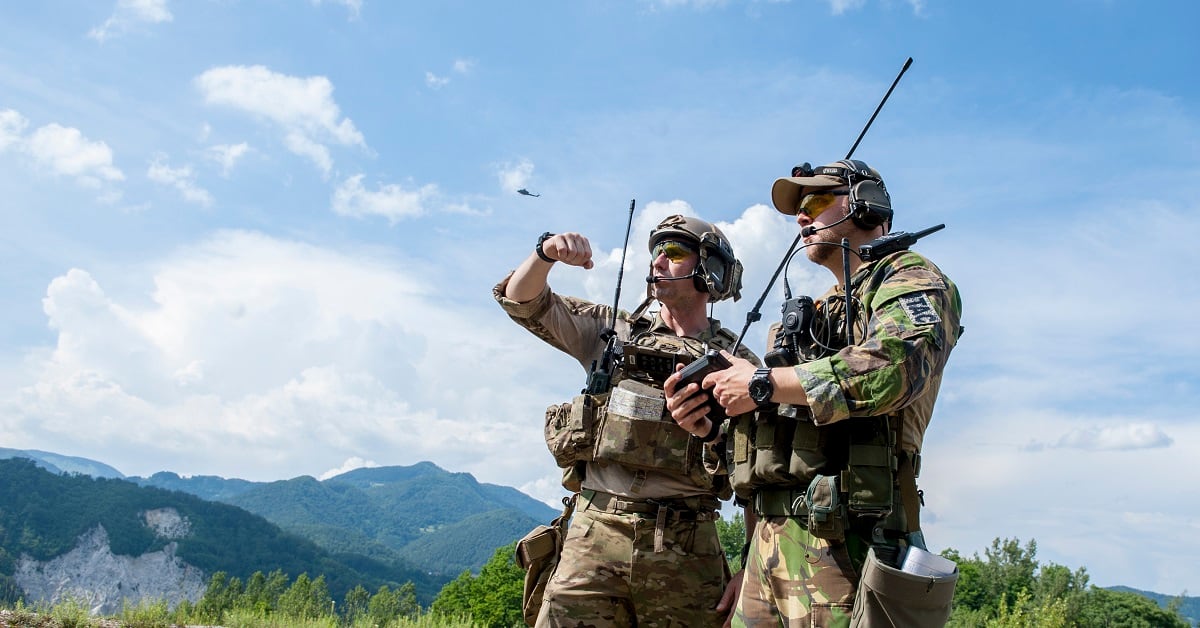Both American and Russian special operations forces have made it clear they’re seeking game-changing technology to elevate their troops on the battlefield, but reality often tramples expectations.
Going back to 2013, U.S. Special Operations Command sought proposals for its Tactical Assault Light Operator Suit, or TALOS. The system was quickly likened to an “Iron Man” suit, but in fact, it sought a range of technologies that would minimize traumatic brain injury, reduce electromagnetic and acoustic signature and protect against advanced rifle rounds.
SOCOM threw water on the ambitious program in February, announcing that it would not be the “exoskeleton” they had boldly advertised, and it certainly wouldn’t be a feasible kit addition for troops in close quarters battle.
“It’s not the Iron Man. I’ll be the first person to tell you that,” SOCOM Acquisition Executive James Smith said at a defense industry forum.
Instead, what the project has reportedly yielded are load-reducing systems, like the ONYX exoskeleton. That will probably end up being useful for long road-marches, but not exactly the combat battle suit first envisioned.
On the other side of the world, the Russian Federation has been revamping its own special operations forces.
A Russian Iron Man?
The country’s “Ratnik" program is developing its third iteration of combat equipment — the first two versions of the program were basic gear for soldiers, according to Rob Lee, a former U.S. Marine Corps officer and doctoral candidate who focuses on Russian defense policy at King’s College London.
“They had a new helmet, new FLAK, new load-bearing vest, with a few higher-tech systems like a GLONASS [GPS alternative] receiver and a tablet for commanders," Lee said. "It just gave them gear roughly comparable to what Western forces had, since their older equipment wasn’t really upgraded during the 1990s-2000s, but it wasn’t anyway comparable to the TALOS stuff.”
Ratnik 3 does boast some of the early TALOS promises: exoskeleton, a visor with a laser aiming system and integrated command-and-control technology, or C2.
Most of that is probably hype.

“As a reminder, most GRU spetsnaz brigade servicemen still aren’t equipped with optics on their rifles, and their most elite units generally prefer Western optics like Aimpoints or EOTechs,” Lee said.
In both training and during operations in warzones such as Syria, Russian spetsnaz are often pictured without any optics mounted on their rifles.
“They kind of remind me of infantry units going into [Operation Iraqi Freedom] when one guy per squad would have an ACOG [a common optic],” Lee said. “They are still behind us on NVGs and thermal optics, as well. So when I hear about any kind of super high-tech new personal equipment for Russian soldiers, I am skeptical.”
Ratnik does have potential in the C2 realm, though.
Russian media and defense firms have emphasized that the new combat equipment is designed for network-centric warfare involving drones and fire support.

Ratnik will be “mated” with small unmanned aerial vehicles and possibly unmanned ground drones for call-for-fire missions, according to Samuel Bendett, an analyst at the Center for Naval Analyses and a fellow in Russia studies at the American Foreign Policy Council.
Bendett and a colleague wrote an article in the The Strategy Bridge in February arguing that Russia has been growing its C2 capabilities for ground forces through systems like Strelets — a tactical reconnaissance device that shares information with both air and artillery assets.
This has already been seen in Syria, according to Bendett, where Russian forces have reported increased speed and accuracy when conducting call-for-fire missions in combat.
“In the near future, Russian soldiers may be able to ‘link in’ with a [unmanned combat aerial vehicle] to call in a strike — but that’s years away at this point," Bendett said. “Today’s Ratnik 2 personal combat gear is still very basic — it’s the future plans for Ratnik 3 and 4 that are impressive.”
The overall goal is information fusion, allowing each soldier on the ground to be both the recipient and generator of data to share with all members of a unit using tablet computers. Russians are working toward this type of integration, but “I think Americans can do this much faster, on a more robust and proven C4ISR network,” Bendett said.
“A lot of these plans are still at concept stages, though Russian soldiers can use [tablets] already,” he added. “I also think a lot of Russian statements are influenced by what they they encountered in Syria — basically, one type of Russian military went in in 2015, and another one came out in 2018.”
American special operators, particularly those qualified in joint terminal attack control, already plan fire support missions and track forces using applications for tablets like the Android Team Awareness Kit.
Meanwhile, Russian military advances are tempered by the country’s declining defense spending.

Russia is increasingly dispensing with weapons programs that aren’t priorities. The country is procuring fewer T-14 Armatas, its next-generation main battle tank, in favor of upgrading existing T-72, T-80, and T-90 tanks, Harvard researcher Dmitry Gorenburg wrote in an Oxford Analytica brief in 2015.
“I have a feeling the same approach will govern procurement for new personal equipment for soldiers,” Lee said.
“They’ll probably improve the tablets and communications gear for improving C2 and maybe some other elements but not a new Iron Man suit,” he added. “A number of defense companies continue to show off new systems with hyperbolic claims about their capabilities, but ultimately Russia just can’t afford most of these.”
In addition to financial troubles, there’s also the problem of troop quality and command structures that Russian special operations leaders have been attempting to address.
Russia’s regular ground forces are still manned by a lot of conscripts. These troops only serve for one year and “are hardly the most motivated soldiers," Lee said.
The various spetsnaz units scattered across the Russian defense ministry and even the interior ministry vary greatly in equipment and training.
While the Russians focus on large strategic exercises more than Americans, "I think the quality of the individual soldiers and small unit training is far behind ours,” Lee added.
After all, the country only publicly announced the formation of a unified command for its SOF troops in 2013, mimicking U.S. Joint Special Operations Command’s cache of tier one operators, which was set up roughly 30 years prior.
Kyle Rempfer was an editor and reporter who has covered combat operations, criminal cases, foreign military assistance and training accidents. Before entering journalism, Kyle served in U.S. Air Force Special Tactics and deployed in 2014 to Paktika Province, Afghanistan, and Baghdad, Iraq.








